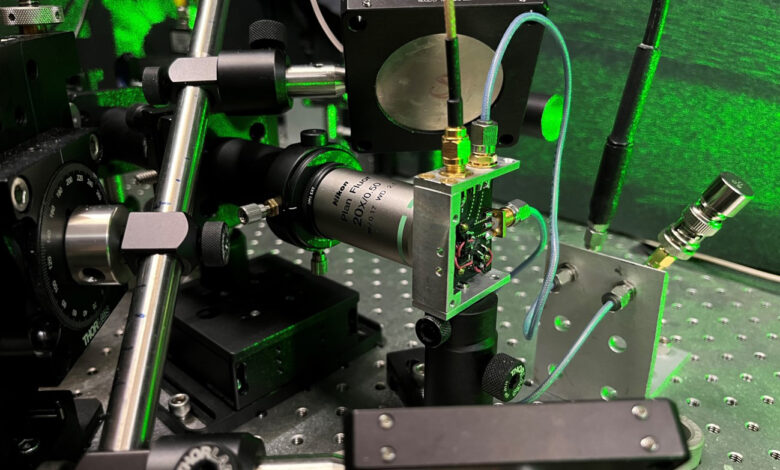The use of quantum sensors for precise measurement and detection

Quantum sensors are devices that make use of the principles of quantum mechanics to achieve highly accurate and precise measurements. Unlike classical sensors, which are limited by the laws of classical physics, quantum sensors can exploit the delicate and often counterintuitive nature of quantum mechanics to detect even the smallest changes in physical systems. In this article, we will explore the concept of quantum sensors, how they work, and the different applications for which they can be used.
What are Quantum Sensors?
Quantum sensors are devices that use the principles of quantum mechanics to measure and detect physical quantities such as magnetic fields, electric fields, temperature, and pressure. They work by exploiting the quantum properties of matter, such as the superposition of states and the entanglement of particles, to achieve high precision and accuracy in their measurements.
One of the most common types of quantum sensors is the atomic magnetometer, which uses the quantum properties of atoms to detect magnetic fields. Another example is the quantum dot thermometer, which uses the quantum properties of electrons in semiconductor materials to measure temperature.
How Do Quantum Sensors Work?
Quantum sensors work by exploiting the quantum properties of matter to detect changes in physical quantities. For example, an atomic magnetometer works by measuring the tiny changes in the energy levels of atoms that occur when they are exposed to a magnetic field. These changes can be detected using light or radio waves, which interact with the atoms in a specific way depending on the strength and direction of the magnetic field.
Similarly, a quantum dot thermometer works by measuring the changes in the electrical properties of a semiconductor material that occur when it is exposed to changes in temperature. These changes can be detected by measuring the electrical current flowing through the material, which varies with temperature in a precise and predictable way.
Applications of Quantum Sensors
Quantum sensors have a wide range of applications in fields such as medicine, environmental monitoring, and national security. For example, they can be used to detect the magnetic fields generated by the human brain, which can be used to diagnose and monitor neurological disorders such as epilepsy and Parkinson’s disease.
In environmental monitoring, quantum sensors can be used to measure the concentration of pollutants in the air or water, or to detect changes in temperature or pressure that could indicate the onset of natural disasters such as earthquakes or hurricanes.
In national security, quantum sensors can be used to detect hidden weapons or explosives, or to monitor the movement of enemy troops or vehicles. They can also be used to detect the presence of nuclear materials, which emit distinctive signals that can be detected using quantum sensors.
Advantages of Quantum Sensors
One of the main advantages of quantum sensors is their high precision and accuracy. Because they exploit the delicate quantum properties of matter, they can detect even the smallest changes in physical quantities with a high degree of sensitivity.
Another advantage is their versatility. Quantum sensors can be used to measure a wide range of physical quantities, from magnetic and electric fields to temperature and pressure. This makes them useful in a wide range of applications, from medical imaging to environmental monitoring to national security.
Challenges and Limitations
Despite their many advantages, quantum sensors also face a number of challenges and limitations. One of the main challenges is their sensitivity to external noise and interference. Because they rely on delicate quantum properties of matter, they can be easily disrupted by external factors such as temperature fluctuations or electromagnetic radiation.
Another challenge is their complexity and cost. Quantum sensors require sophisticated equipment and expertise to design, fabricate, and operate, which can make them expensive and difficult to use for some applications.



